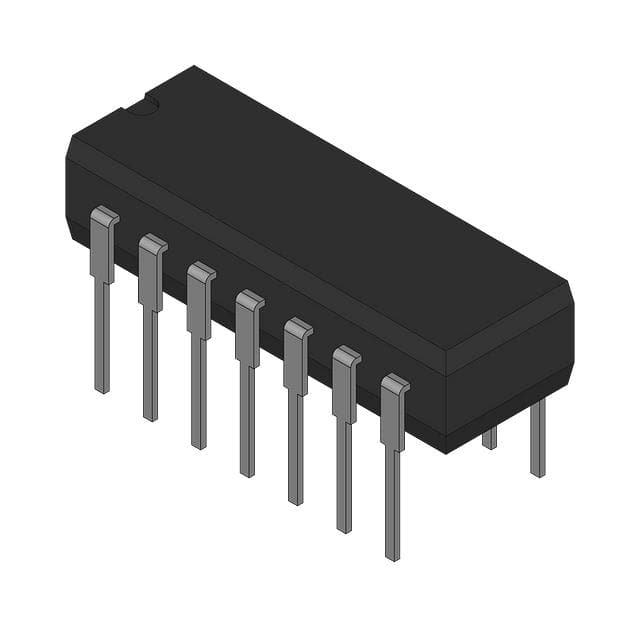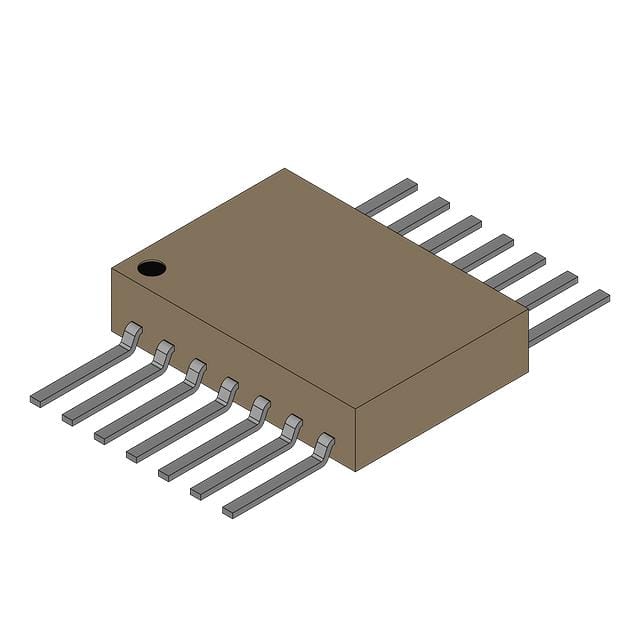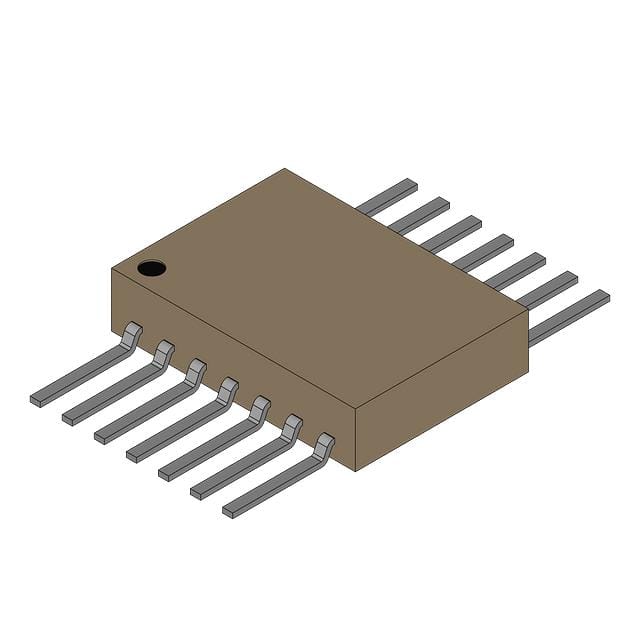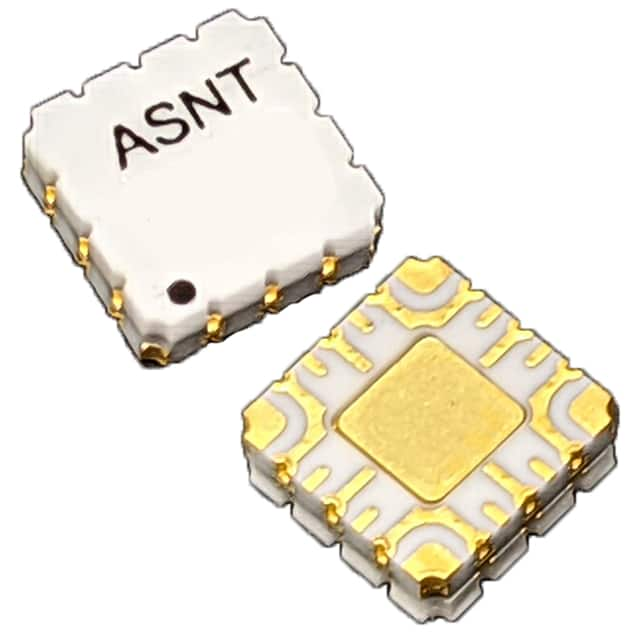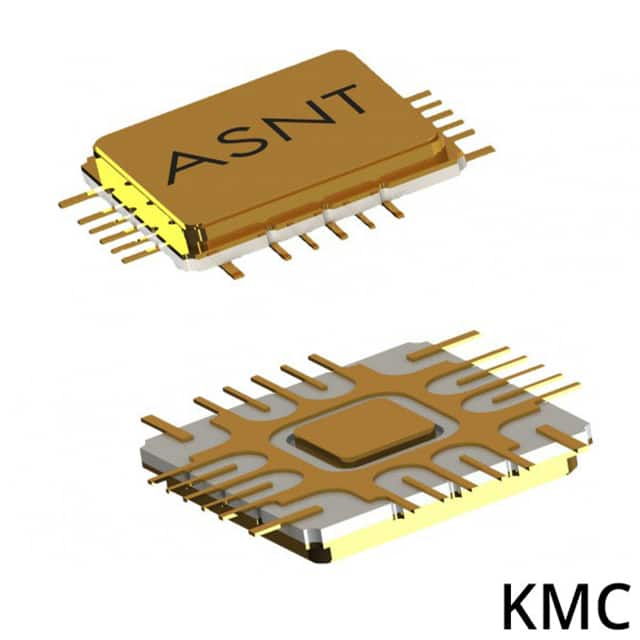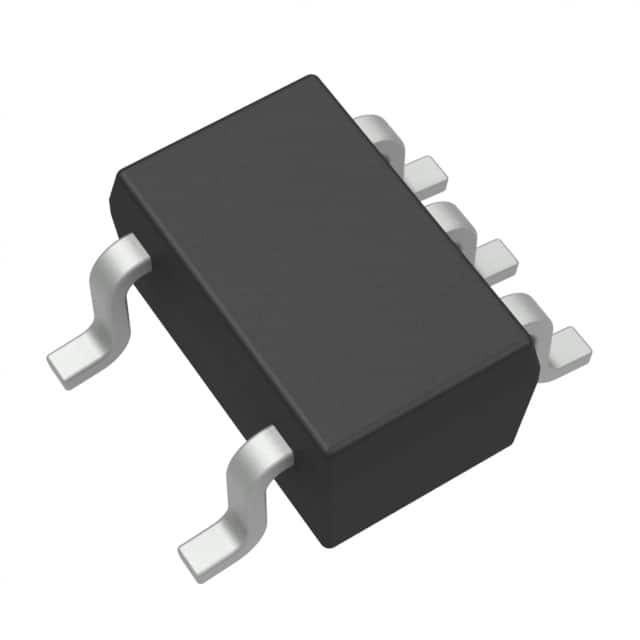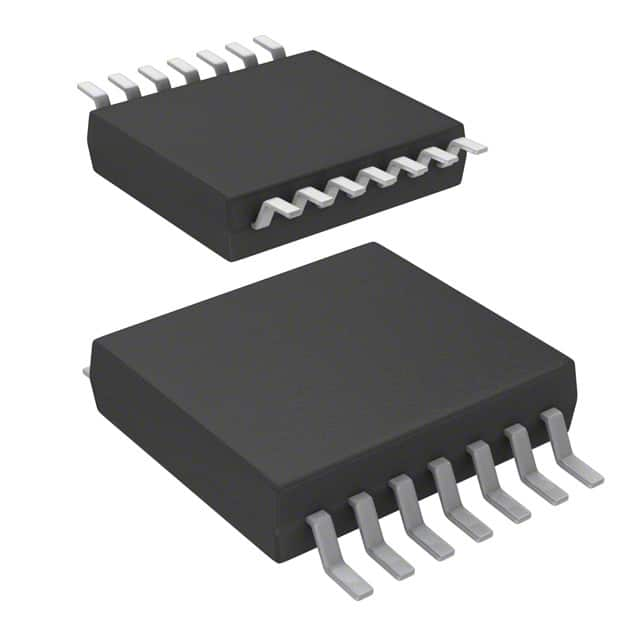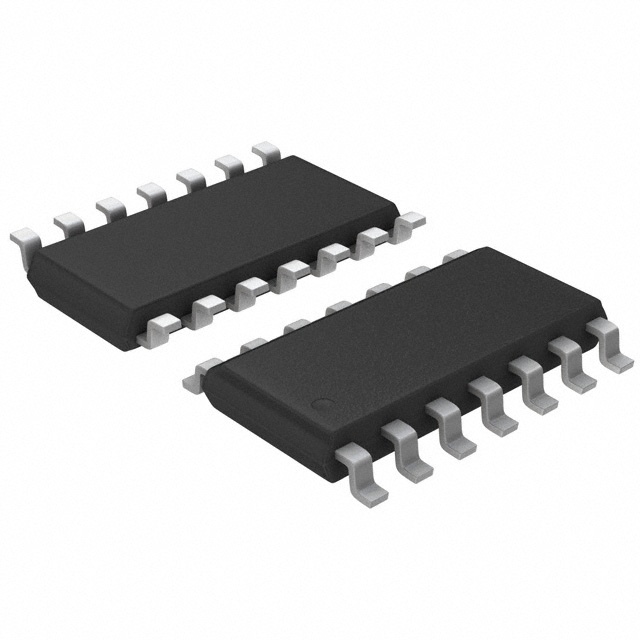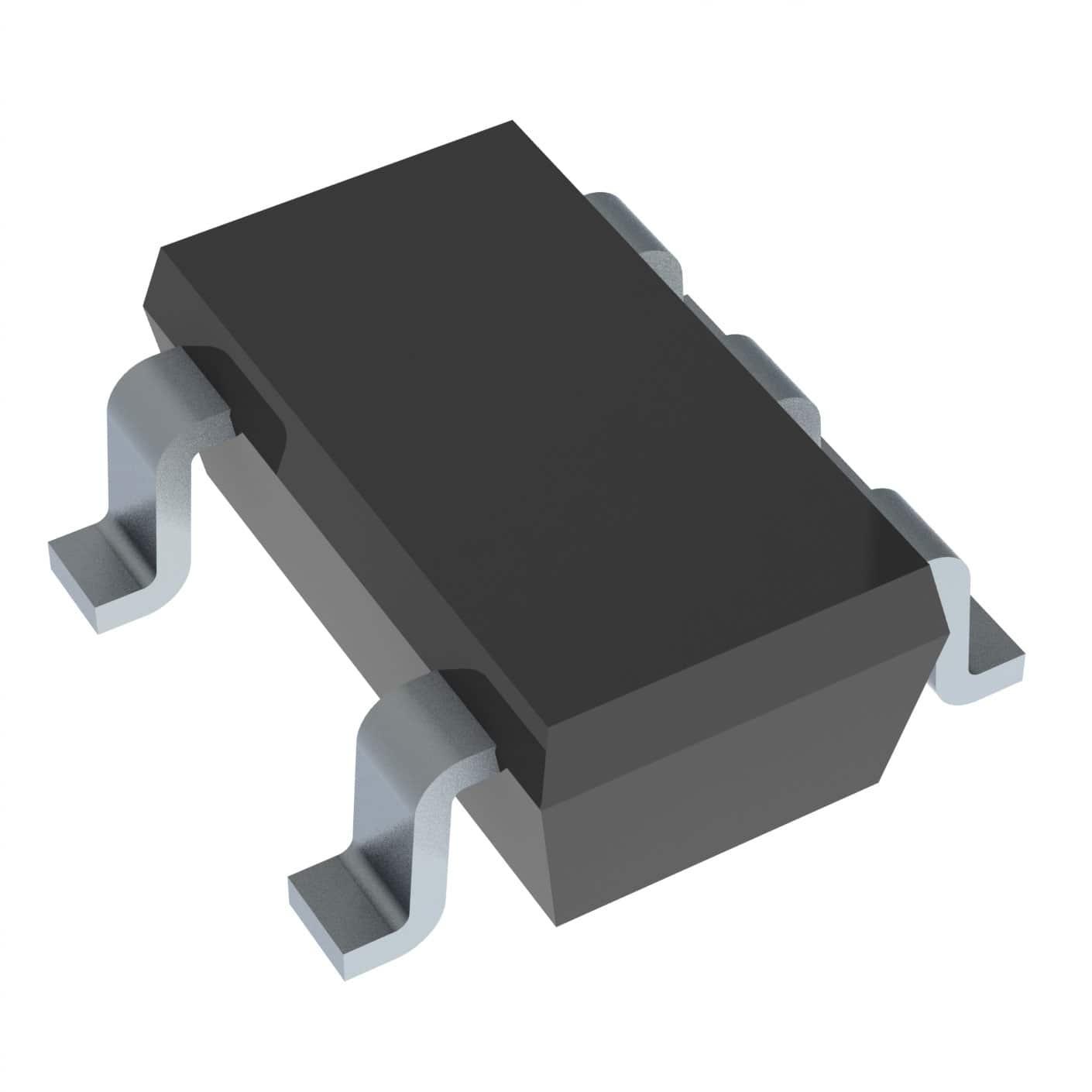54ACTQ04W-QMLV Product Introduction:
National Semiconductor Part Number 54ACTQ04W-QMLV(Logic - Gates and Inverters), developed and manufactured by National Semiconductor, distributed globally by Jinftry. We distribute various electronic components from world-renowned brands and provide one-stop services, making us a trusted global electronic component distributor.
54ACTQ04W-QMLV is one of the part numbers distributed by Jinftry, and you can learn about its specifications/configurations, package/case, Datasheet, and other information here. Electronic components are affected by supply and demand, and prices fluctuate frequently. If you have a demand, please do not hesitate to send us an RFQ or email us immediately sales@jinftry.com Please inquire about the real-time unit price, Data Code, Lead time, payment terms, and any other information you would like to know. We will do our best to provide you with a quotation and reply as soon as possible.
Introducing the National Semiconductor 54ACTQ04W-QMLV, a high-performance hex inverter designed to meet the stringent requirements of the aerospace and defense industries. This QMLV-certified product offers exceptional reliability and performance, making it the ideal choice for critical applications in harsh environments.
The 54ACTQ04W-QMLV features advanced technology that ensures high-speed operation and low power consumption. With a wide operating voltage range of 2V to 6V, this hex inverter can accommodate a variety of power supply configurations. Its robust design allows it to withstand extreme temperature variations, radiation, and other environmental stresses, ensuring reliable operation in the most demanding conditions.
This product is specifically designed for use in aerospace and defense applications, where reliability and performance are of utmost importance. It can be used in avionics systems, satellite communications, military equipment, and other critical systems that require high-speed signal inversion. The 54ACTQ04W-QMLV is also suitable for industrial applications that require rugged and reliable components.
With its QMLV certification, the National Semiconductor 54ACTQ04W-QMLV guarantees the highest level of quality and reliability. It is manufactured using advanced processes and undergoes rigorous testing to ensure compliance with the industry's strictest standards. Trust in the 54ACTQ04W-QMLV to deliver exceptional performance and reliability in your aerospace, defense, and industrial applications.
Gates are an important part of the transistor in the integrated circuit, especially in the field effect transistor (FET) plays a role in controlling the current interruption. By interacting with the insulation layer between the channel, it uses the electric field effect to regulate the carrier concentration in the channel, and then controls the current flow between the source and the drain electrode. The inverter is a logic electronic device that is mainly used to reverse the logic state of the input signal, that is, from a high level to a low level, or from a low level to a high level. In digital logic circuits, the inverter is often implemented as a NOT gate, which is carefully designed by multiple transistors (such as PMOS and NMOS pairs in CMOS technology), and realizes the logical reversal of the signal by controlling the switching state of the transistor. Together, they form the basis of logic circuits and demonstrate the high flexibility of integrated circuits in signal processing and control.
Application
Gates, as key components of transistors, are widely used in various integrated circuits, especially in core components such as microprocessors, memory, sensors, etc. They are the foundation for implementing complex logic functions and high-performance computing. Inverters play an important role in digital circuit design, communication systems, power management, and other fields. Through their logic inversion function, they support signal shaping, amplification, isolation, and timing control requirements. In various fields such as consumer electronics, automotive electronics, industrial automation, and data centers, gates and inverters are indispensable electronic components that help devices achieve efficient and accurate signal processing and control, promoting technological progress and industrial upgrading.
FAQ about Logic - Gates and Inverters
-
1. What is a logic gate in an IC?
A logic gate in an IC is an electronic component used to perform logic operations. Logic gates are often used to implement basic logic functions such as AND, OR, NOT, etc., and are the basic building blocks in digital circuits.
The working principle of the logic gate is based on the properties of semiconductor materials, especially PN junctions. When a voltage is applied between the source and the drain, current will not flow through this barrier without a gate voltage. However, when an appropriate voltage is applied to the gate, it changes the electric field distribution at the PN junction, allowing current to pass. In short, the gate voltage controls the flow of current from the source to the drain, which enables the transistor to be used as a switch: closed when there is no gate voltage and open when there is a gate voltage.
In integrated circuits (ICs), logic gates usually refer to field effect transistors (FETs) or metal oxide semiconductor field effect transistors (MOSFETs). These transistors have three terminals: source, drain, and gate. The source and drain are the entrance and exit of the current, while the gate is used to control the flow of current. By controlling the gate voltage, the switching control of the current in the circuit can be achieved, thereby performing various logical operations.
-
2. What is the use of the logic gate?
The main function of the logic gate is to control the switching and logical operation of the signal. The logic gate receives the input signal and controls the state of the output signal according to the logical state of the input signal (such as high level or low level), thereby realizing basic logical operation functions such as AND, OR, NOT, etc.
Specifically, the working principle of the logic gate is based on the structure and characteristics of the transistor. The transistor has three main parts: source, drain and gate. The gate adjusts the current flow between the source and drain by controlling the voltage, thereby realizing the switching function. When the gate voltage reaches a certain threshold, a conductive channel is formed between the source and the drain, and the current can pass; otherwise, the current is blocked.
Logic gates have a variety of applications in digital circuits, including but not limited to:
Remove noise coupled into the circuit, improve system reliability.
Speed up the turn-on and turn-off of transistors, reduce turn-on and turn-off losses.
Reduce transistor DI/DT, protect transistors and suppress EMI interference.
Protect the gate, prevent gate breakdown under abnormal high voltage conditions.
Increase drive capability, and drive transistors under smaller signals.
-
3. Can NAND gates be used as inverters?
NAND gates can be used as inverters. NAND gates, especially Schmitt-triggered NAND gates, are often used in full-bridge inverter circuits to ensure that the switch between the two channels is clear and not affected by any type of stray transients or low-signal interference.
In the inverter, the role of the NAND gate is to drive the MOSFET or IGBT through logic control to achieve DC to AC conversion. For example, in the Arduino-based full-bridge sine wave inverter design, the Arduino is programmed to generate SPWM outputs in the appropriate format from the pins, process these signals through the NAND gate, and finally drive the relevant MOSFETs of the full-bridge driver network to achieve the inverter function.
The advantages of using NAND gates include fast switching response and high reliability. In addition, Schmitt-triggered NAND gates can enhance anti-interference capabilities and ensure stable operation of the inverter. However, there are also challenges to consider when designing inverters, such as switching losses and thermal management.
 Lead free / RoHS Compliant
Lead free / RoHS Compliant











